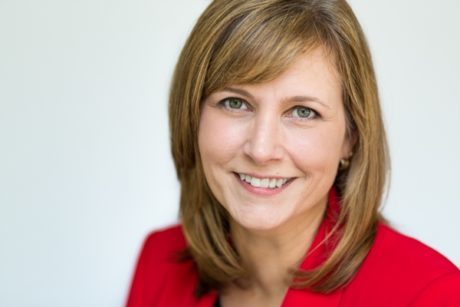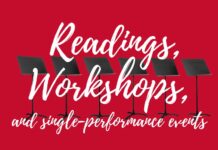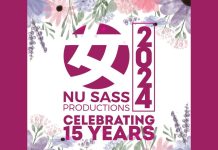Rare words indeed to take in and ponder from the preface to the The Brookings Institution’s Creative Communities, Art Works in Economic Development:
“Without good data and analysis—much of it grounded in economic theory—we cannot hope to strengthen communities through the arts or to achieve any of the other goals we set for the National Endowment for the Arts, the largest nationwide funder of the arts.”—from the Foreword by Rocco Landesman.

Michael Kaiser’s recent Curtain, the Future of the Arts in America also has much to contemplate in this tough times for many arts institutions and creative artists. His book led to articles such as these from American Theater and this from the Miami Herald. Let’s face it, ROI (return on investment), STEM (science, technology, engineering and mathematics) and economic development terms haven’t been central watch words for us though new audience development is. These terms were often enough spoken in hushed tones or left to our Boards members to concern themselves with.
So, how do we learn new ways to communicate our case for the value of the arts to a community. That a vibrant arts scene is “priceless” to the quality of life of a community. That a vital arts cultures can, no make that is, an economic driver. That the arts are an important growth “industry” that supports jobs, generates revenue, and helps with the psychic health of citizens.
So with that as a preface, this is Part #2 of my interview with Ava Spece, CEO and President of the Workhouse Arts Center. In this part, we chat about economic development matters. One more thing, if you would like to suggest an “arts and economic development” column, please let me know.
David Siegel: How does the Workhouse Arts Center add to economic development in Fairfax County?
Ava Spece: There’s no doubt that the Workhouse Arts Center has been a driver of growth and economic success for Fairfax County and the greater region. At its core, the Workhouse is a model example of adaptive re-use, taking what once was a clear negative – the rotting hulk of a former prison – and transforming it into a center of activity, creativity, community, and commerce. Further, the Workhouse is a shining example of a public-private partnership that substantially supports the surrounding region. Clearly that’s a huge positive for the residents in the region and Fairfax County, too.
But the effects of the Workhouse can be felt far beyond the borders of its 55-acre campus. Our on-campus exhibits, classes, programs, and events draw over 100,000 visitors a year. These visitors, quite literally, stop at local shops, gas stations, restaurants, and other venues both before and after trips to the Workhouse. Some of our events, like August’s Brewfest, specifically include local businesses like Forge and Fairwinds breweries, in on-campus events that yield immediate economic benefits and long-term brand awareness for local entrepreneurs. Even more substantially, the increase in numbers of visitors to the region, coupled with the economic benefits of their visits, increases the attractiveness of the Lorton area and Fairfax County overall as prime locations for tourism, new businesses, home buying, and growing families.
How does the Workhouse Arts Center add to the quality of life for the citizens of Fairfax County and the nearby communities?
The Workhouse enriches the quality of life for Fairfax County residents – and even for residents of Prince William and Stafford, DC and beyond – producing each year more than 100 art exhibitions, 300 performances, and offering more than 800 arts education classes to adults and youth of all ages and skill levels. We also host special events that draw people to our campus, including our annual Carnival in June, Fireworks in July, Brewfest in August, and our Workhouse Fine Arts Festival in September. All told, we welcome more than 100,000 visitors to the Workhouse every year, whether it’s to explore the grounds and galleries for the first time during our monthly, free, Second Saturday Art Walk, unwind and laugh at a Cool Cow Comedy show, view an exhibit, or take their first – or fifteenth – arts class.
The 65 resident and 30 associate artists who work and exhibit on our campus amplify the reach of the Workhouse, welcoming visitors into their studios to watch them work and chat about art, techniques, and more. There is also a museum dedicated to the history of the Workhouse and the imprisonment of suffragists who picketed the White House in 1917 for the right to vote. Most importantly, the Workhouse provides a sense of place and pride in the region.
Do you have plans for working with the new mixed-used Laurel Hill development that will be a neighbor of the Workhouse?
Liberty Crest’s development of the Penitentiary and Reformatory campuses is another remarkable part of our adaptive reuse story. We are excited about the project and consider it to be our sister site in the region.

We already have a positive relationship with them and are thrilled to be a part of supporting this continuing Fairfax County story of successful adaptive reuse projects and the many benefits such a project brings to the region.
And it’s fair to say we’re champing at the bit with ideas for possible cooperative and collaborative efforts. It is another population that will occupy this new residential development and be able to take advantage of the Workhouse Arts Center as a vibrant resource which contributes to their quality of life.
LINK:
In the Moment: An Interview with Workhouse Arts Center’s Ava Spece Part 1 by David Siegel.




